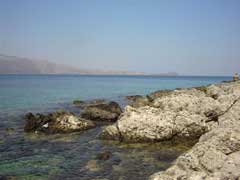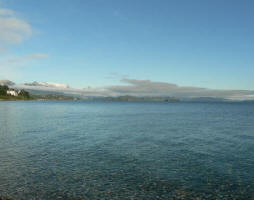 Water Safety in Buildings- Publication
Water Safety in Buildings- Publication
Extensive experience shows that poor design and management of water systems inbuildings can cause outbreaks of disease. The types of building, water uses, diseaseoutcomes and individuals affected are diverse. The health risks are preventable andcan be readily controlled. However, evidence from outbreak detection suggests that theoverall trend is increasing. With increasing global urbanization, the overall exposureof the human population to poorly designed or managed water systems in buildings isincreasing rapidly. Consequently, the risk of disease outbreaks is also increasing. Actionsto reduce the risk of disease should be considered a public health priority.One of the challenges is that management of building water supplies is often overlooked.In many countries and regions, management actions for water supplies in buildings mayfall outside the responsibility of the drinking-water supplier. This can be infl uenced by arange of factors, including ownership of assets and rights of access. Water safety plans(WSPs) for managing public water supplies are not typically extended to apply withinbuildings. In many cases, owners, managers or maintenance personnel are responsible formanagement of building water supplies, but awareness and application of drinking-waterguidelines is often limited.This text is one of series of supporting documents that provide guidance on implementing the World Health Organization (WHO) Guidelines for drinking-water quality (GDWQ)(WHO, 2008). It is intended to support improvement of water safety within buildings.The third edition of the GDWQ (WHO, 2008) introduced the concept of WSPs withina Framework for safe drinking-water (see Figure 1.1 in the introduction, below). Theframework focuses attention on effective preventive management and thereby diseaseprevention. The GDWQ include specifi c reference to issues associated with largebuildings, such as health care facilities, schools and daycare centres, and recommend thatthese buildings have their own WSPs to ensure the maintenance of safe water supplies.The intention is that such building plans should complement the WSPs of water suppliers.The issue of water safety in buildings and the need for additional guidance was identifi edas a priority at the meeting of government-nominated experts who fi nalized the thirdedition of the GDWQ. This led to the development of this document. The guidanceprovided in this document is based on the framework from the GDWQ (WHO, 2008), aswell as other supporting texts, particularly those dealing with:• Guidelines for safe recreational water environments volume 2: swimming pools andsimilar environments (WHO, 2006a)• health aspects of plumbing (WHO/WPC, 2006)• heterotrophic plate counts (Bartram et al., 2003)• Legionella and the prevention of legionellosis (Bartram et al., 2007)• pathogenic mycobacteria (Bartram et al., 2004).The development of this document was guided by the recommendation of expert meetingshosted fi rst in March 2005 (by the University of East Anglia, Norwich, United Kingdom),x Water safety in buildingsthen in December 2005 (by the WHO Collaborating Centre for Health PromotingWater Management and Risk Communication, Institute for Hygiene and Public Health,University of Bonn, Germany). These meetings were followed by meetings in February2007 (by the Instituto Superiore di Sanita, Rome, Italy), in October 2007 (by the ScottishExecutive, Edinburgh, Scotland), and fi nally in July 2008 (by the Federal Ministry ofHealth in Berlin, Germany). The development of this document was also guided by aseries of critical reviews by specialists in the fi eld.The Department of Public Health and Environment (Programme on Water, Sanitation,Hygiene and Health, WHO) led the production of this document.This document is written for the full range of “actors” who infl uence the overall safemanagement of building water supplies. In particular, it is directed to those who design,construct, manage, operate, maintain and regulate building water systems. It is intendedto be a useful resource for the development of training and information material.
| Contact information | n/a |
|---|---|
| News type | Inbrief |
| File link |
http://whqlibdoc.who.int/publications/2011/9789241548106_eng.pdf |
| File link local |
|
| Source of information | World Health Organization |
| Keyword(s) | health, water supply |
| Subject(s) | INFORMATION - COMPUTER SCIENCES , INFRASTRUCTURES |
| Geographical coverage | n/a |
| News date | 10/06/2011 |
| Working language(s) | ENGLISH |
 you are not logged in
you are not logged in





